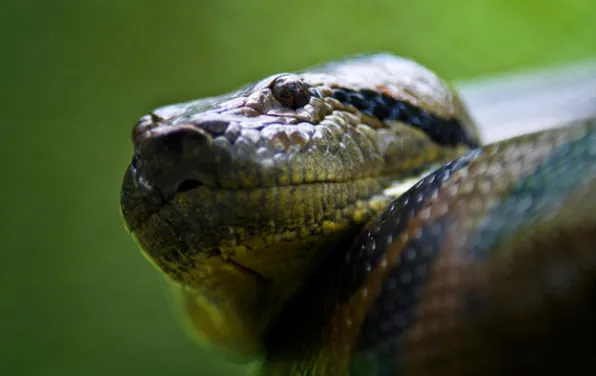
Table of Contents
Scientific Classification
- Kingdom: Animalia
- Phylum: Chordata
- Class: Reptilia
- Order: Squamata
- Family: Boidae
- Genus: Eunectes
- Species: Eunectes murinus
Quick Overview
The Green Anaconda (Eunectes murinus), also known as Common Anaconda, is a massive and non-venomous snake renowned as one of the world’s largest snake species. Native to the Amazon Basin in South America, these enormous reptiles have captured the imagination of many due to their impressive size and unique characteristics.
Fast Facts
- Scientific Name: Eunectes murinus
- Lifespan: Estimated to be around 10-30 years in the wild.
- Average Size: Adult Green Anacondas can reach lengths between 15 to 20 feet or more, with records of individuals over 30 feet.
- Diet: Carnivorous, primarily feeding on aquatic prey such as fish, birds, and mammals.
- Habitat: Aquatic, inhabiting swamps, marshes, and slow-moving rivers.
Did you know?
The Green Anaconda holds the title of the world’s heaviest snake species, capable of reaching astonishing girths exceeding that of even the reticulated python.
Appearance
Green Anacondas are known for their large size and distinctive appearance. They typically have olive-green skin with darker spots or blotches along their backs. Their bodies are cylindrical and powerful, adapted for life in the water. Despite their intimidating size, they have relatively small, beady eyes and nostrils positioned on top of their heads, allowing them to breathe while mostly submerged.
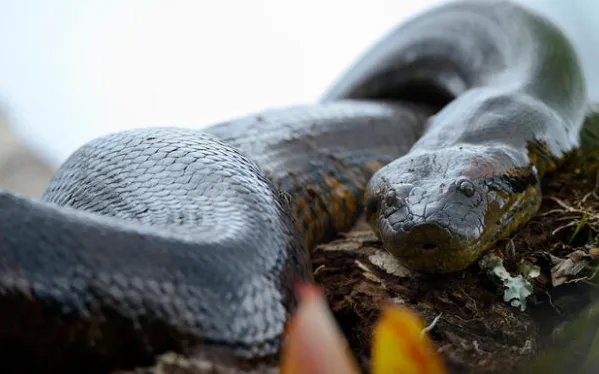
Size and Weight
As one of the largest snake species globally, Green Anacondas can attain impressive lengths. Adults typically measure between 15 to 20 feet long, but exceptional individuals have been documented at over 30 feet. The heaviest Green Anacondas can weigh well over 550 pounds, making them true giants among snakes.
Temperament and Behavior
Green Anacondas are primarily aquatic and tend to be solitary creatures. They are known for their ambush-style hunting, lying in wait for suitable prey to approach. Despite their intimidating size, they are not generally aggressive towards humans and are more inclined to flee when encountered.
Fun Fact
Female Green Anacondas are significantly larger than males, a rarity among snake species. This size difference is believed to be advantageous for the females in overpowering and constraining their much smaller mates during mating.
Habitat and Distribution
Green Anacondas are native to the Amazon Basin in South America. They inhabit dense rainforests, slow-moving rivers, marshes, and swamps, where they can navigate both in the water and on land. Their distribution spans countries like Brazil, Venezuela, Colombia, and Ecuador.
Care Guide
Green Anacondas are not suitable as pets for the average reptile enthusiast due to their size and specific habitat requirements. They are best left in the wild or cared for by professional facilities.
Diet and Nutrition
These snakes are opportunistic carnivores, preying on a variety of aquatic animals, including fish, birds, and mammals. Green Anacondas are known for their powerful constriction, which they use to subdue and swallow large prey.
Health and Wellness
In the wild, Green Anacondas are subject to various ecological threats, including habitat destruction and encounters with humans. Captive Green Anacondas, if maintained, require highly specialized care and a safe, spacious environment.
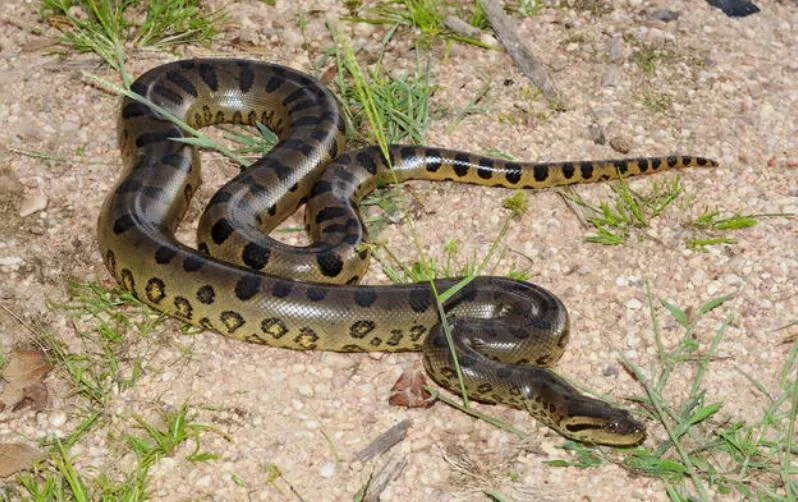
Reproduction
Breeding behaviors of Green Anacondas in the wild are not well-documented due to their elusive nature. Female Green Anacondas give birth to live young, with litters typically numbering between 20 to 40 neonates. Reproduction in captivity is rare and should only be undertaken by experienced herpetologists.
Conservation Status
Green Anacondas are not currently considered endangered; however, they face ongoing habitat loss and degradation in the Amazon rainforest. Protection measures and habitat conservation are essential to ensure the long-term survival of this iconic species.
Photo Gallery
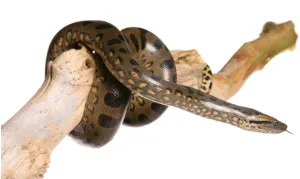
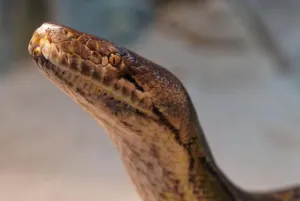
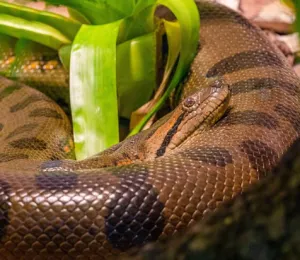
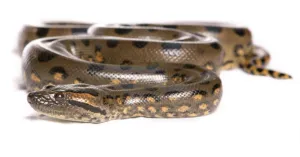
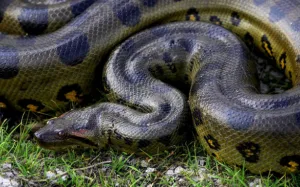
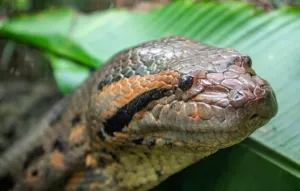
Related Profiles
Share This Profile:
3 Amazing Facts About Green Anacondas
- Exceptional Hydrodynamics: Green Anacondas are incredibly adept swimmers due to their streamlined bodies and muscular tails. Their hydrodynamic design allows them to navigate swiftly through water, making them efficient aquatic hunters.
- Extraordinary Lifespan: In the wild, Green Anacondas can live for several decades, with some individuals reaching 30 years or more. This longevity adds to the intrigue surrounding these magnificent snakes.
- Dual Lungs: Green Anacondas have a unique respiratory system, featuring both left and right lungs. This adaptation helps them breathe efficiently while partially submerged in water, making them highly skilled aquatic predators.
- Enchi Ball Python: A Unique and Stunning Morph of Python regius - March 27, 2025
- Emerald Tree Monitor: The Enigmatic Green Guardian of the Rainforest - March 26, 2025
- The Egyptian Cobra (Naja haje): A Fascinating Serpent - March 25, 2025
